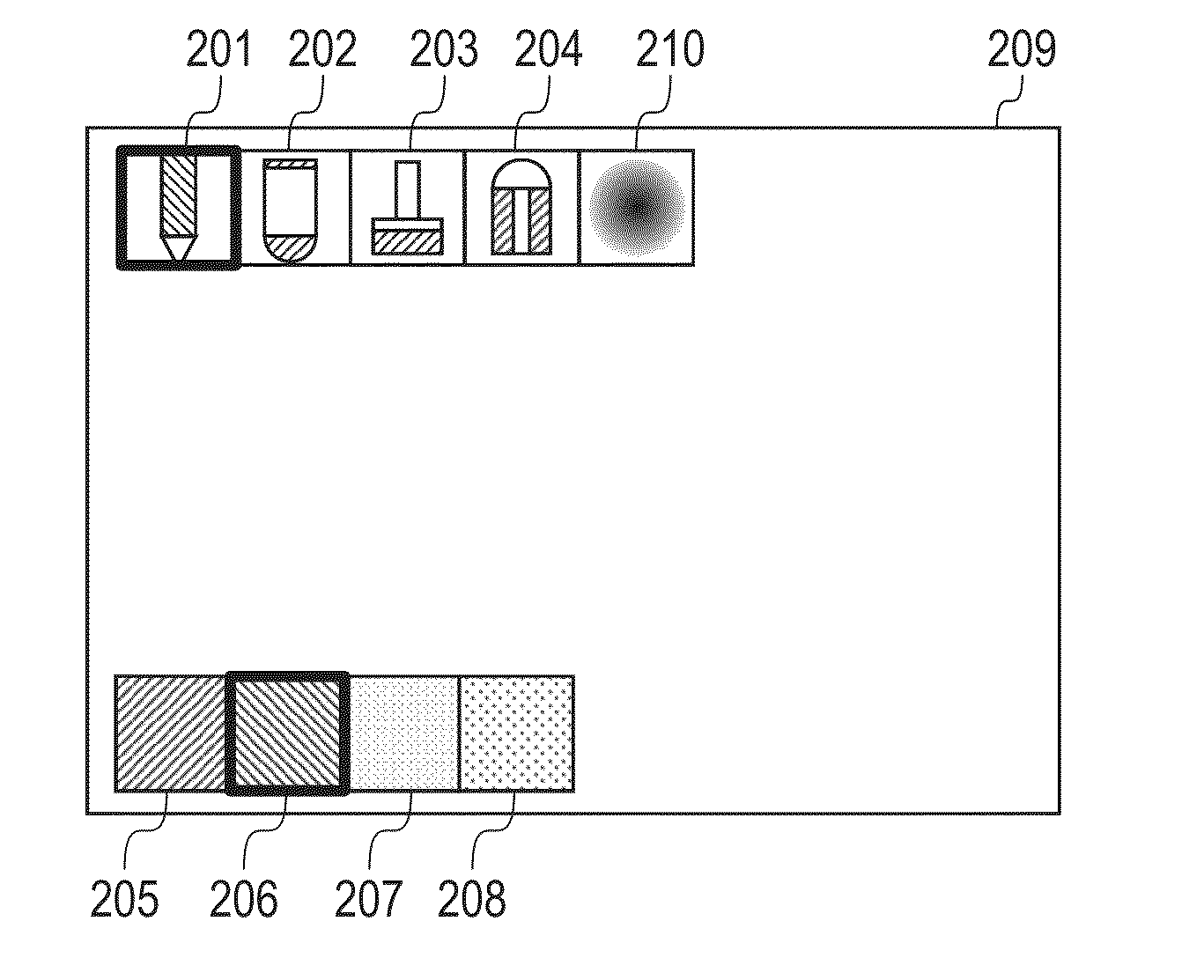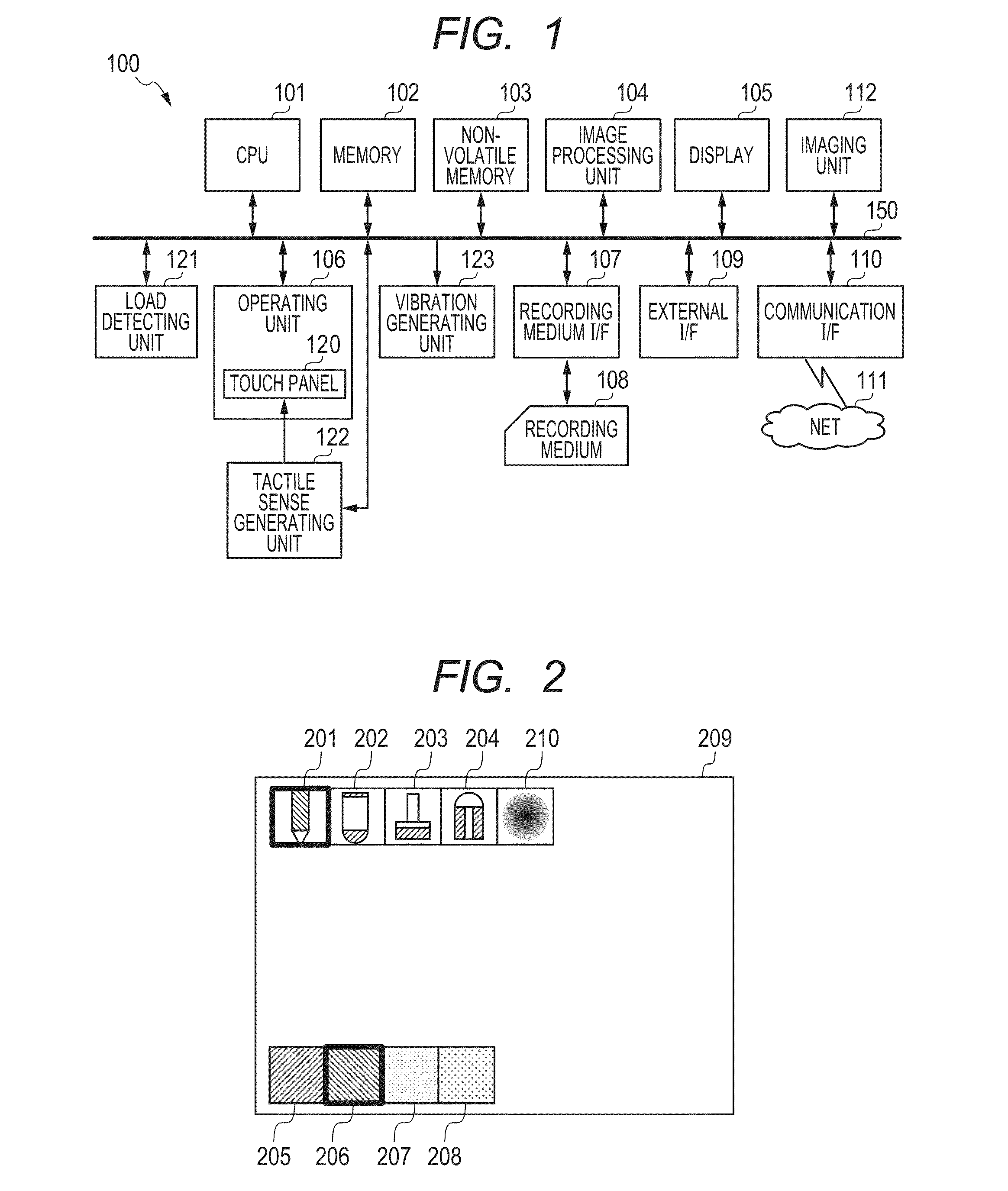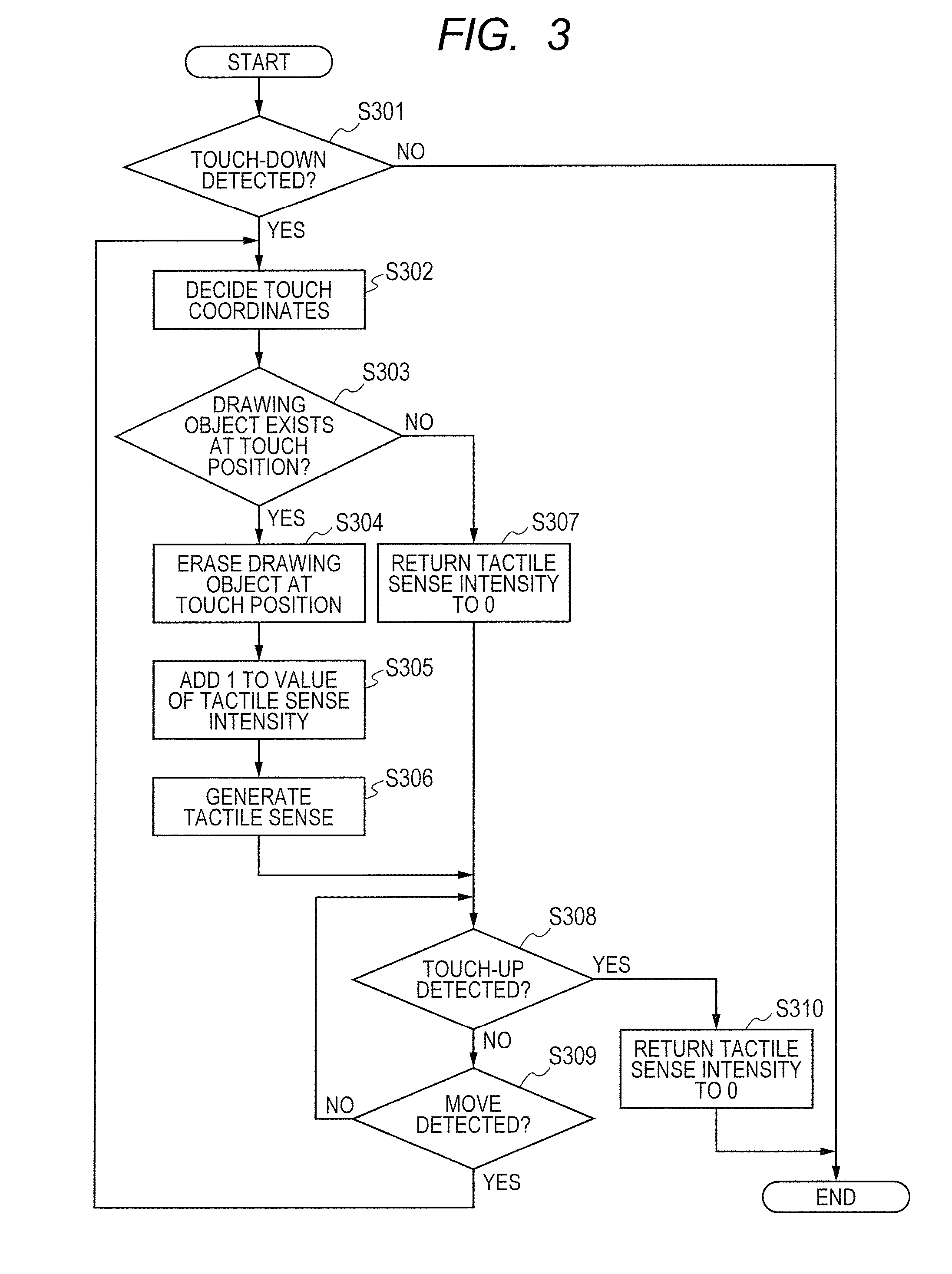Image processing device, tactile sense control method, and recording medium
- Summary
- Abstract
- Description
- Claims
- Application Information
AI Technical Summary
Benefits of technology
Problems solved by technology
Method used
Image
Examples
first embodiment
[0021]FIG. 1 is a diagram illustrating an electronic device 100 serving as an image processing device according to the first embodiment. The electronic device 100 can be constructed by a cellular phone, a smartphone, a tablet terminal, or the like. As illustrated in FIG. 1, a CPU 101, a memory 102, a non-volatile memory 103, an image processing unit 104, a display 105, an operating unit 106, a recording medium I / F (interface) 107, an external I / F 109, and a communication I / F 110 are connected to an internal bus 150. An imaging unit 112, a tactile sense generating unit 122, and a vibration generating unit 123 are also connected to the internal bus 150. Each unit connected to the internal bus 150 can mutually transmit and receive data through the internal bus 150.
[0022]The memory 102 has, for example, a RAM (volatile memory or the like using a semiconductor device). The CPU 101 controls each unit of the electronic device 100 by using the memory 102 as a work memory in accordance with ...
second embodiment
[0072]Subsequently, the electronic device 100 according to the second embodiment will be described. In the case of erasing the drawing object drawn by the painting function, on the basis of the pen type of the drawing object as an erasure target, the electronic device 100 according to the second embodiment controls the type of tactile sense which is generated. The electronic device 100 according to the second embodiment will be described hereinbelow with respect to portions different from the electronic device according to the first embodiment.
[0073]FIG. 4 is a flowchart illustrating a tactile sense control process by the electronic device 100 according to the second embodiment. Among the processes in the tactile sense control process illustrated in FIG. 4, substantially the same processes as those in the tactile sense control process according to the first embodiment are designated by the same reference numerals.
[0074]In S303, the CPU 101 discriminates whether or not a drawing obje...
third embodiment
[0083]Subsequently, the electronic device 100 according to the third embodiment will be described. In the case of applying a blurring filter to the drawing object, the electronic device 100 according to the third embodiment controls the tactile sense intensity on the basis of a degree of blurring. The electronic device 100 according to the third embodiment will be described hereinbelow with respect to portions different from the electronic devices according to the other embodiments.
[0084]FIG. 7 is a flowchart illustrating a tactile sense control process by the electronic device 100 according to the third embodiment. Among the processes in the tactile sense control process illustrated in FIG. 7, substantially the same processes as those in the tactile sense control process according to the first embodiment are designated by the same reference numerals.
[0085]In S303, the CPU 101 discriminates whether or not a drawing object exists at the touch position. If a drawing object exists, the...
PUM
 Login to View More
Login to View More Abstract
Description
Claims
Application Information
 Login to View More
Login to View More - R&D
- Intellectual Property
- Life Sciences
- Materials
- Tech Scout
- Unparalleled Data Quality
- Higher Quality Content
- 60% Fewer Hallucinations
Browse by: Latest US Patents, China's latest patents, Technical Efficacy Thesaurus, Application Domain, Technology Topic, Popular Technical Reports.
© 2025 PatSnap. All rights reserved.Legal|Privacy policy|Modern Slavery Act Transparency Statement|Sitemap|About US| Contact US: help@patsnap.com



